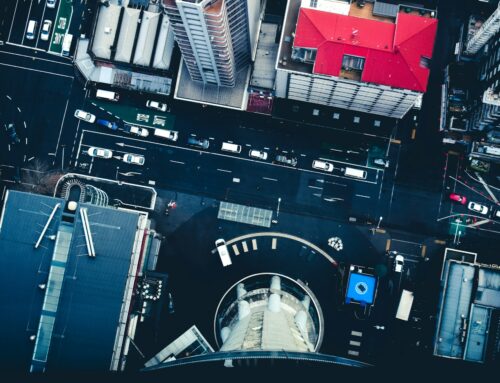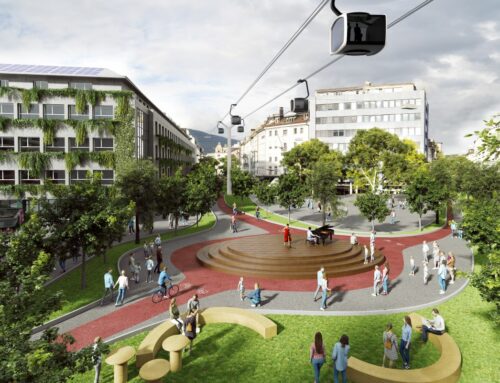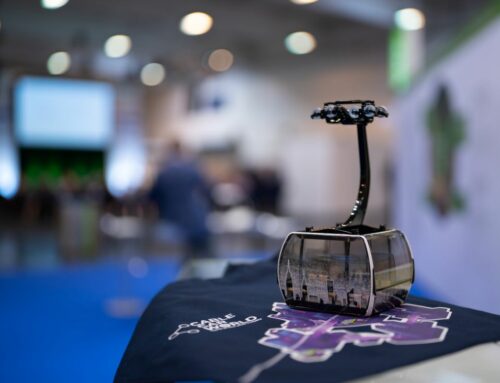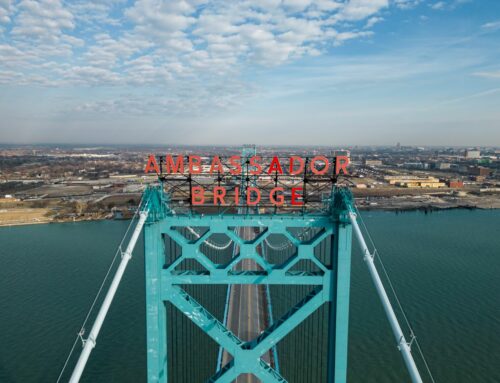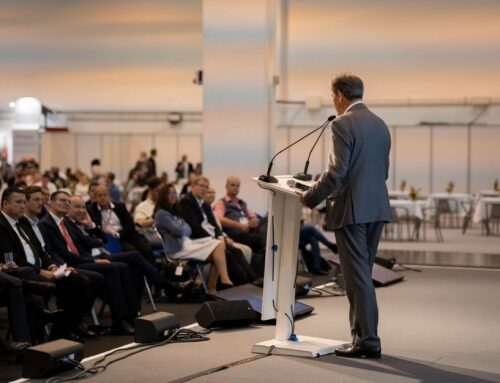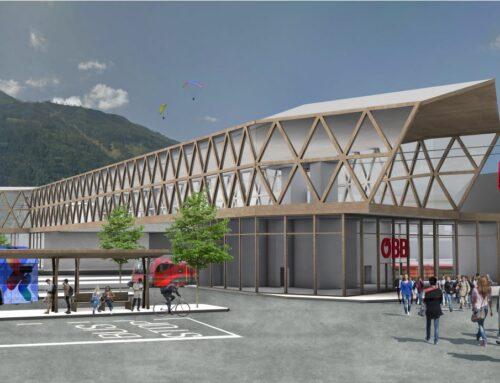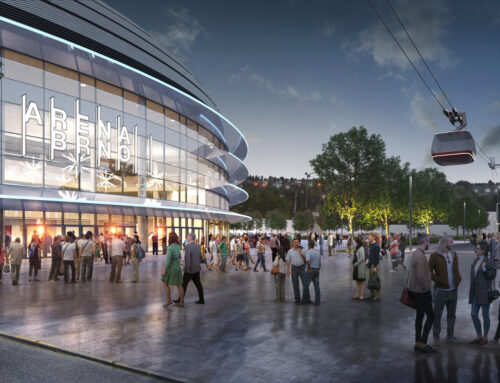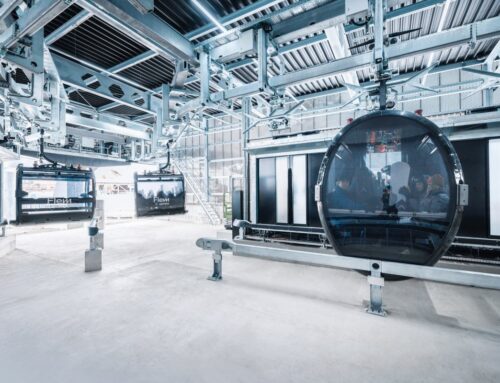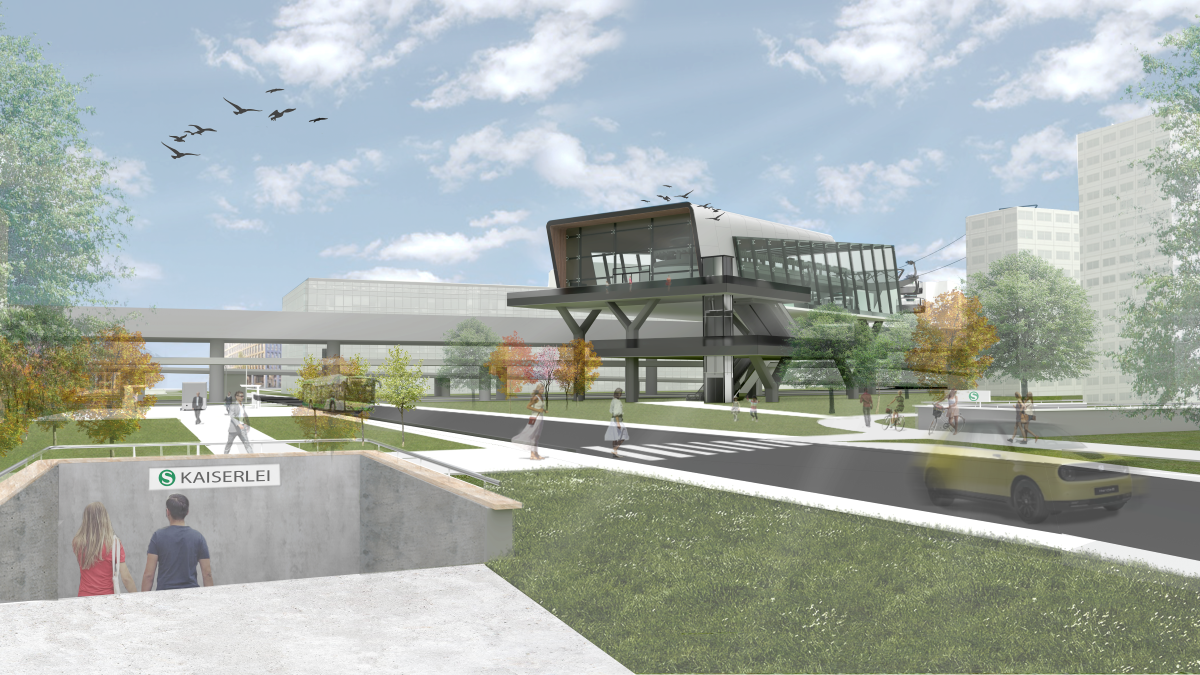
SI-Urban, Urban
Update: Project High¯Line
Specifically: In less than ten minutes from the Kaiserlei in Offenbach to the Festplatz in Frankfurt: float comfortably over the rush hour traffic and avoid traffic jams.
The cable car cabins are envisaged to be wheelchair accessible and capable of accommodating bicycles and strollers. The project envisions a cable car system capable of transporting up to 5,000 passengers per hour at a speed of 6 m/s.
The proposal includes the potential for three stations at the Eissporthalle in Frankfurt, Riederhöfe, and Kaiserlei in Offenbach.
It would traverse over the A661 highway, the Main River, Ostpark, and the Festplatz adjacent to the Eissporthalle. With its planned route, it is able to alleviate pressure on the Kaiserlei-Ratswegbrücke and integrate with public transportation.
There are existing plans that explore the introduction of a cable car system in Offenbach. As far back as four years ago, Thomas Horn, Director of the Frankfurt-Rhine-Main Regional Association, highlighted the positive attributes of cable cars as an urban mode of transportation.
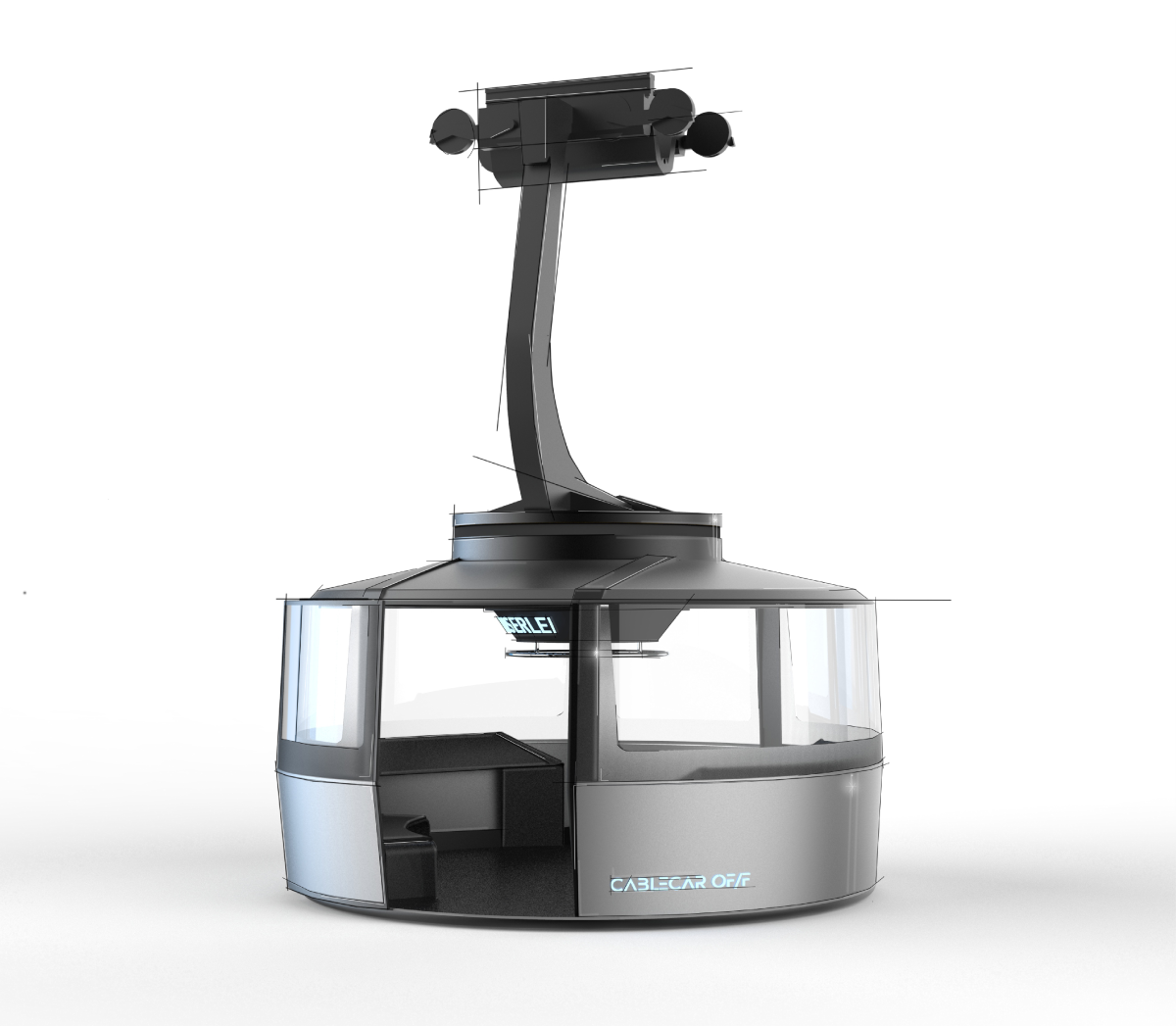
Individual cabin design
Visualisation of a 360 degrees cabin.
Advantages & hurdles
In comparison to the S-Bahn, the costs associated with cable car construction would amount to just one-eighth of those for an S-Bahn.
Nonetheless, the project, championed by Jürgen Follmann, Head of the Department of Construction and Environmental Engineering at Darmstadt University, and Thomas Marx, Research Associate at Darmstadt University, still faces obstacles.
According to the mayors of Offenbach and Frankfurt, there is insufficient data available to ascertain the degree to which a cable car would be a meaningful addition to public transit.
They advocate for further data collection. The “High ̄ Line“ concept was unveiled to the public during the second Cable Car Day in Frankfurt and at the Cable Car World event.
Follmann explained: “Thanks to the collaboration with the Offenbach University of Art and Design, under the guidance of Professor Peter Eckert and Research Associate Daniel Rese, we were able to develop such an impressive concept that we presented to the public.“
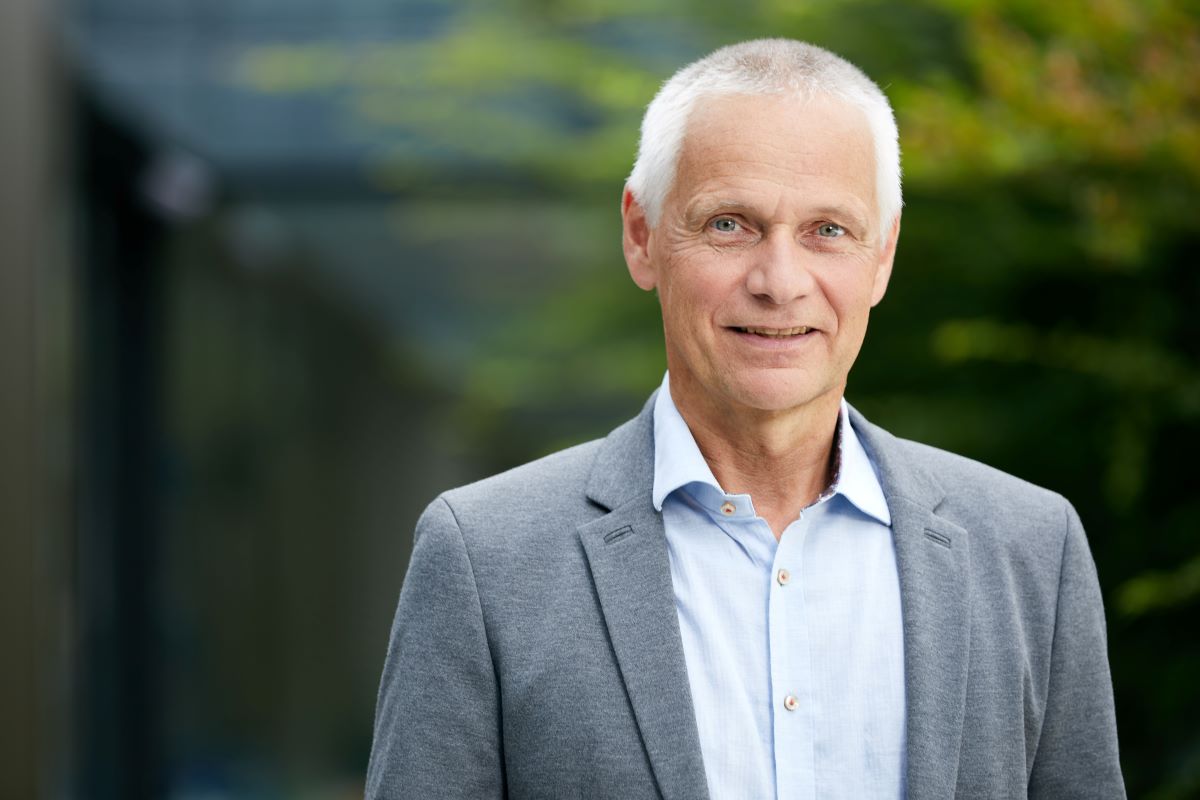
Jürgen Follmann
Head of the Department Construction and Environmental Engineering at Darmstadt University
“We have examined various route options with the students. The route between Offenbach and Frankfurt was one of them. Equally promising was a route from Terminal 3 at the airport to the Frankfurt Stadium. Offenbach is very receptive to the project. Frankfurt is still skeptical. However the potential is definitely there.“
Potential for district development
The planning of the stations has been significantly influenced by the potential for district development. “The Riederhöfe region, for instance, is a somewhat neglected area that could be revitalized with a cable car station, providing a connection to public transport,“ Follmann said.
Generally, the route has been designed with proximity to the S-Bahn, U-Bahn, and tram in mind, aiming to facilitate seamless transfers.
Additionally, the project benefits from a study by bpd-immobilienentwicklung, which underscores the advantages of urban cable cars as a means of transportation and for district development.
Depending on the design, a station could take on a broader role within a city district, potentially serving cultural or gastronomic purposes.
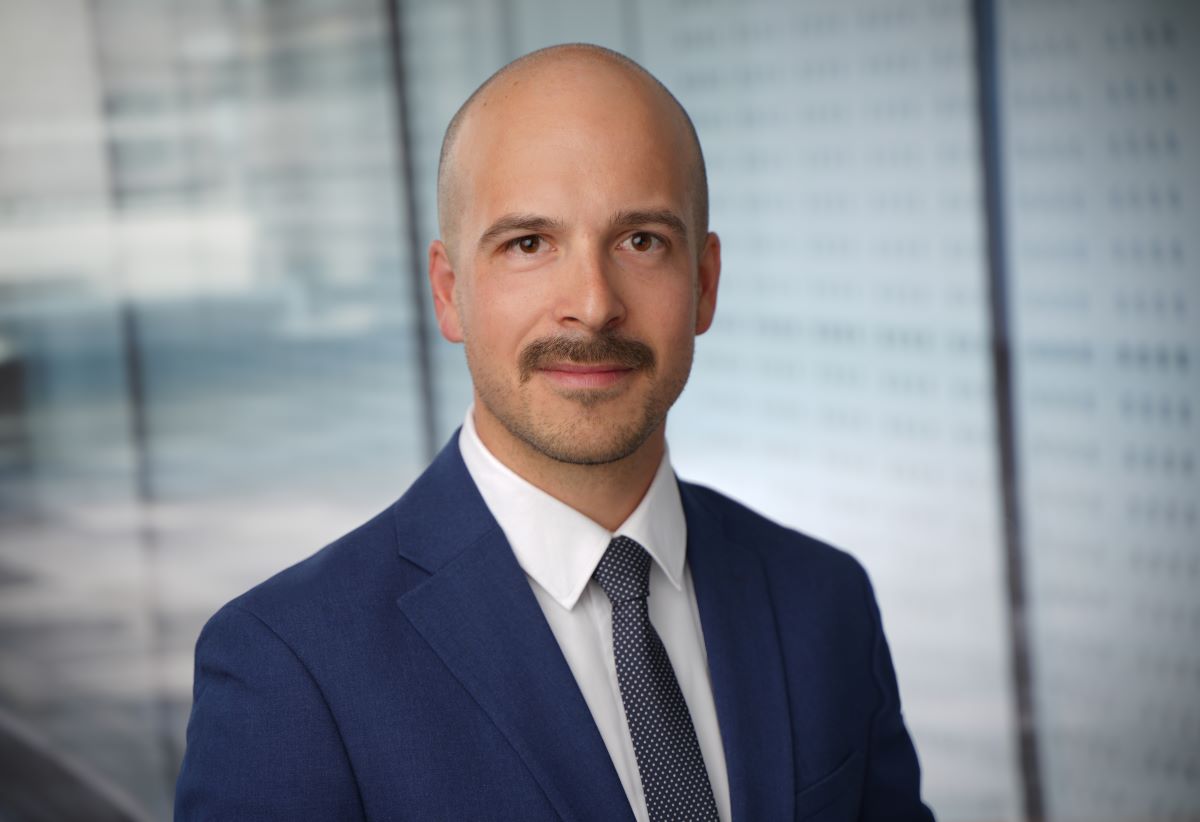
Thomas Marx
Research Associate at University Darmstadt
“I believe it‘s the responsibility of the planners to consider the cable car as an urban transportation option and bring it to the public‘s attention. We need to engage in the discussion and include public transport integration in district planning from the outset. If cars are prioritized initially, then no one will switch to other modes. By then, reliance on cars will already have become ingrained.“
Planners have a responsibility
Especially regarding the support structures and the space beneath, efforts to enliven them through illumination or greenery are essential. It‘s imperative to seamlessly integrate the support structures into the cityscape and ensure the cable car is not perceived as an alien element within the urban environment.
“In the case of the cable car for the Federal Garden Exhibition, it‘s clear that often, the long-term perspective is not fully considered. If this cable car had been conceived as a public transportation option prior to the event, with a different route design, it would have been accepted. However, now it‘s challenging to retroactively present the cable car as an urban transportation method,“ remarked Marx. Ensuring societal acceptance necessitates careful consideration of the cable car‘s design.
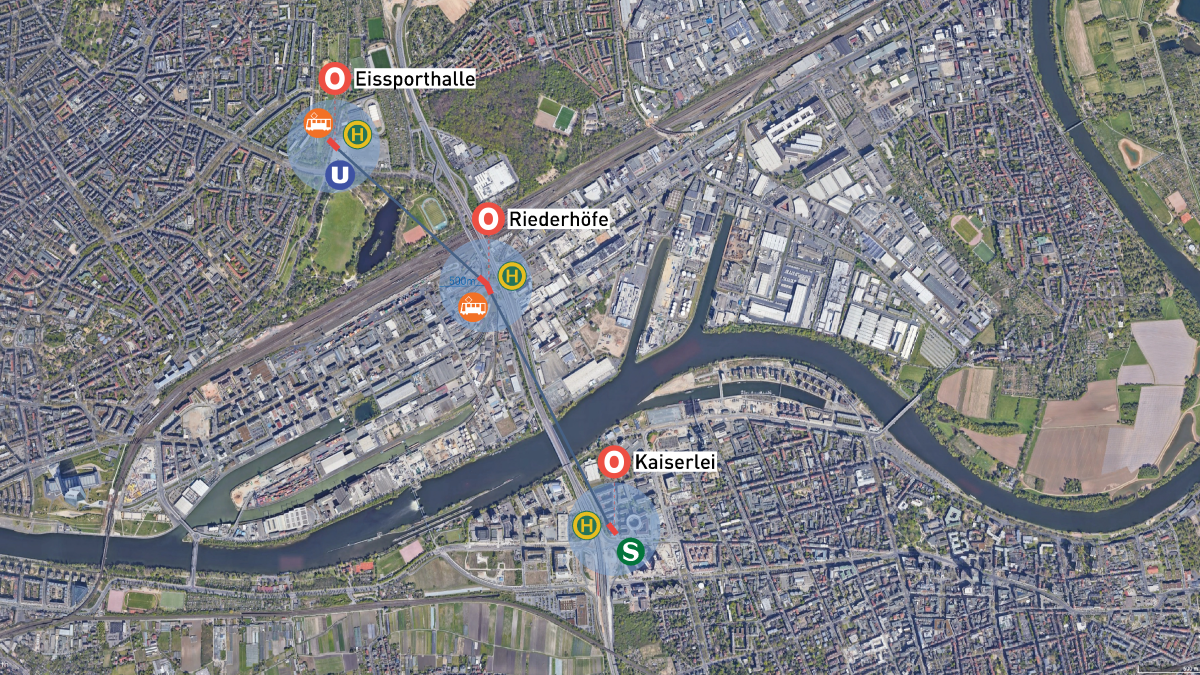
One possible route...
…three stations connect Frankfurt with Offenbach.
